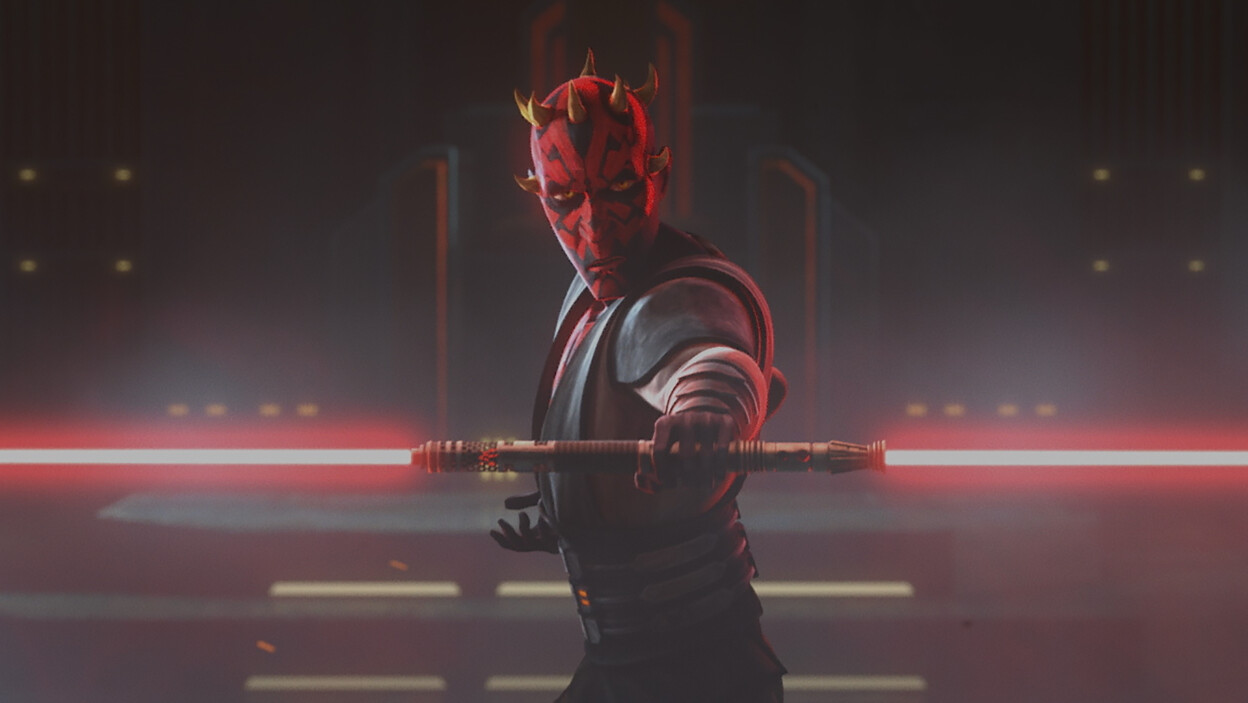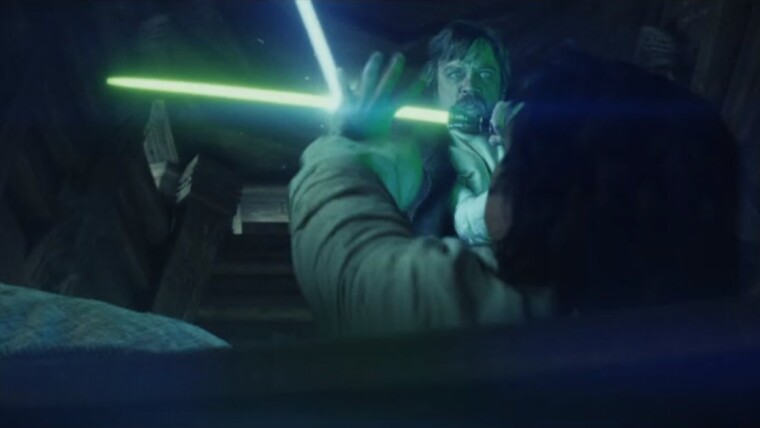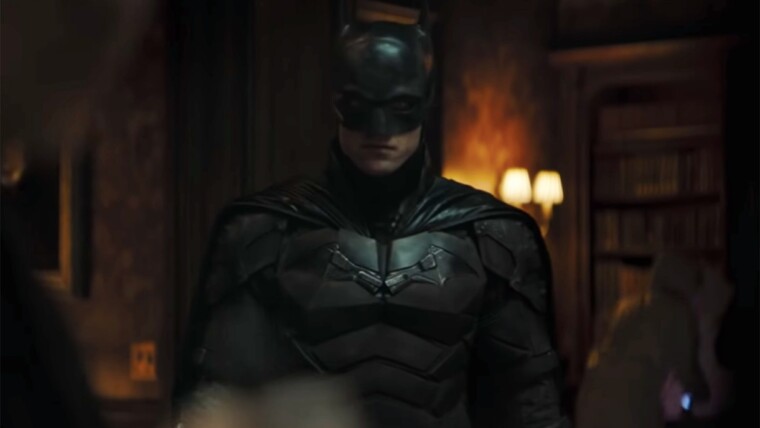There’s a general rule in fiction when it comes to crafting menacing villains: show, don’t tell. Think about it. Some of the most iconic villains in cinema have endured through time because of their deeds. When you think badass baddies, you think of Return of the King‘s Witch-king of Angmar, No Country for Old Men‘s Anton Cugirh, The Dark Knight‘s Joker and of course, Star Wars‘ Darth Vader. In lieu of long-winded exposition or pace-shattering flashbacks, these films use clever and subtle shorthands to show the audience how menacing these guys are. It’s the way they carry themselves, the visual language of their attire or design, the terrible crimes they commit. Their speech patterns, or rather lack of speech, speaks volumes about their character. Vader is the prime example of this villain archetype. At least he was until George Lucas’ prequel-trilogy took that rule and threw into the dumpster. He took cinema’s original Dark Lord and gave him a needlessly long backstory, generic motivations and dreadful dialogue. Vader’s legacy was forever tarnished.
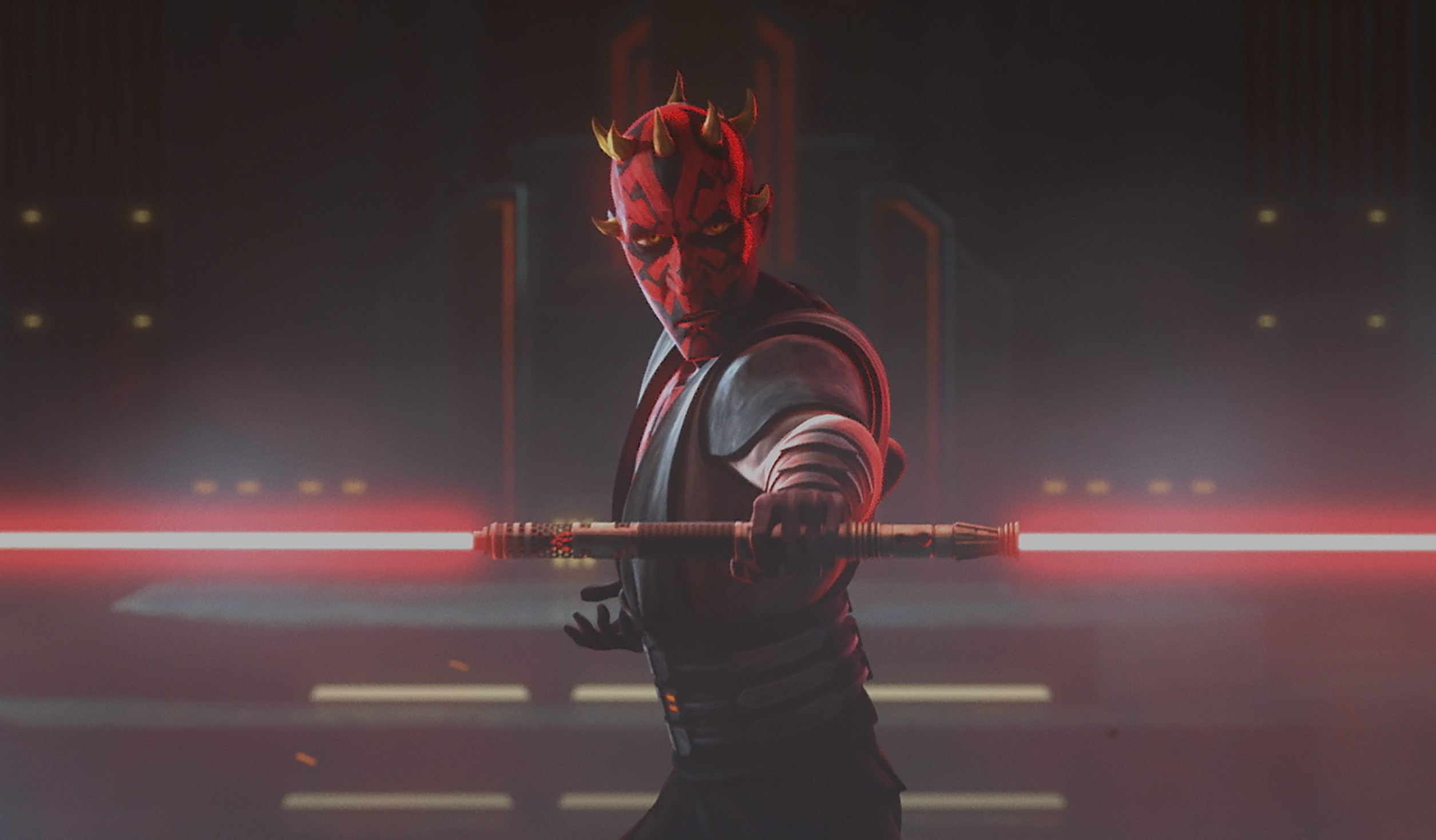 So it stands to reason that attempting to retroactively add more details and storylines to a villain’s past is a bad idea, right? That was my initial stance thanks to George Lucas’ prequel films. Then Clone Wars writer and animator Dave Filoni shattered that rule. He took one seemingly nameless and forgettable secondary villain and elevated him to soaring new heights. A force to rival Darth Sidious himself. This is the story of the Phantom Apprentice. The Dark Son of Dathormir. The legend of Darth Maul.
So it stands to reason that attempting to retroactively add more details and storylines to a villain’s past is a bad idea, right? That was my initial stance thanks to George Lucas’ prequel films. Then Clone Wars writer and animator Dave Filoni shattered that rule. He took one seemingly nameless and forgettable secondary villain and elevated him to soaring new heights. A force to rival Darth Sidious himself. This is the story of the Phantom Apprentice. The Dark Son of Dathormir. The legend of Darth Maul.
True Origins
Believe it or not, there’s more to Darth Maul that his brief appearances in Phantom Menace. In the Clone Wars TV series, it was revealed that Maul was one of three sons born to a powerful witch called Mother Talzin. Within his native Zabrak culture on the planet of Dathomir, there exists a matriarchal society dominated by witches, or Nightsisters, who use a form of magic that draws from the Dark Side of the Force. A potent corruption of the Force that allows its users to possess living hosts, heal grievous wounds and even raise the dead. Naturally, this attracted Sidious to Mother Talzin and the two of them formed an alliance. This eventually led to the Sith Lord adopting young Maul to be his new apprentice, with Mother Talzin’s blessings.
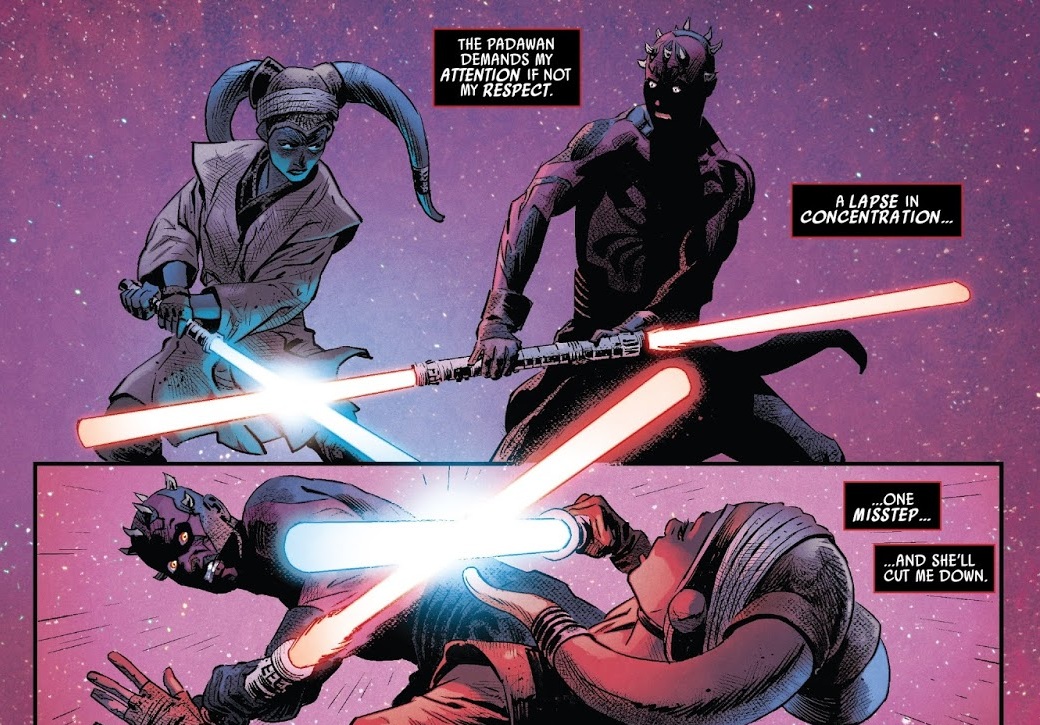 As the years went by, Darth Maul became an effective assassin for Sidious. He would be sent to dispatch rogue pirates and thugs who threatened Sidious’ Trade Federation allies. That wasn’t enough to satiate the young Sith’s bloodlust, though. No, he longed for Jedi blood. In Marvel’s Star Wars: Darth Maul comic series, we see the Zabrak go on the hunt for a young Jedi Padawan, Eldra Kaitis. Since young, he has been indoctrinated to hate the Jedi by Sidious, viewing them as weak and corrupt. So strong was his hatred that he went out of his way to rescue Eldra from a group of pirates…just so he could kill her himself. During their final confrontation, we see Maul have doubts about the power of the Dark Side and he even begins to respect Kaitis’ strength. Nonetheless, his will is resolved and he cuts down the Padawan in cold blood. His first kill.
As the years went by, Darth Maul became an effective assassin for Sidious. He would be sent to dispatch rogue pirates and thugs who threatened Sidious’ Trade Federation allies. That wasn’t enough to satiate the young Sith’s bloodlust, though. No, he longed for Jedi blood. In Marvel’s Star Wars: Darth Maul comic series, we see the Zabrak go on the hunt for a young Jedi Padawan, Eldra Kaitis. Since young, he has been indoctrinated to hate the Jedi by Sidious, viewing them as weak and corrupt. So strong was his hatred that he went out of his way to rescue Eldra from a group of pirates…just so he could kill her himself. During their final confrontation, we see Maul have doubts about the power of the Dark Side and he even begins to respect Kaitis’ strength. Nonetheless, his will is resolved and he cuts down the Padawan in cold blood. His first kill.
It is baffling how a relatively short comic book series does more for Maul’s character development than a high-budget film ever could. Note, he’s the main villain of the film in which Sidious hides behind! None of the gripping inner conflict and drama of the character seen in Darth Maul was in Phantom Menace. The only real indication we have of Maul’s capability or personality is the fact that he killed Qui-Gon Jinn, Obi Wan’s master. This was supposed to be a big deal. One of the greatest Jedis in the whole order brutally struck down by a deadly Sith warrior. A sign to herald the Sith’s return. Unfortunately, none of this really matters when both of your characters are severely underdeveloped.
 Phantom Menace was too busy cramming in exposition dumps about the Force, dull senate meetings and pod-racing when they should have been setting up character arcs. The battle between Jinn and Maul was framed to be this epic duel between the Light and Dark Side of the Force. In reality, it’s one cardboard thin character killing another cardboard thin character before getting cut in half by the guy from Moulin Rouge. The climactic duel of Phantom Menace ends up becoming a hollow display of impressive footwork and over-stylized fight choreography. Thankfully, his story doesn’t end here.
Phantom Menace was too busy cramming in exposition dumps about the Force, dull senate meetings and pod-racing when they should have been setting up character arcs. The battle between Jinn and Maul was framed to be this epic duel between the Light and Dark Side of the Force. In reality, it’s one cardboard thin character killing another cardboard thin character before getting cut in half by the guy from Moulin Rouge. The climactic duel of Phantom Menace ends up becoming a hollow display of impressive footwork and over-stylized fight choreography. Thankfully, his story doesn’t end here.
A Roaring Return
Most folks would normally stay dead after getting cut in half, not Maul though. In spite of being humiliated by Kenobi and cast aside by Sidious, Maul refused to die. All the suffering and hate within the former Sith willed him to live. The fourth season of Clone Wars had revealed that when he had fallen in Naboo, his body was dumped on a junkyard world. There he used the force to construct a spider-like body for himself. Years of isolation had driven him to madness until his brother Savage Oppress took him back to Talzin. There on his homeworld, his mother restored his sanity, gave him a new set of cybernetic legs along with a purpose. He swore to bring down his usurper Count Dooku and exact vengeance upon Kenobi. He would be a scourge to both the Sith and Jedi.
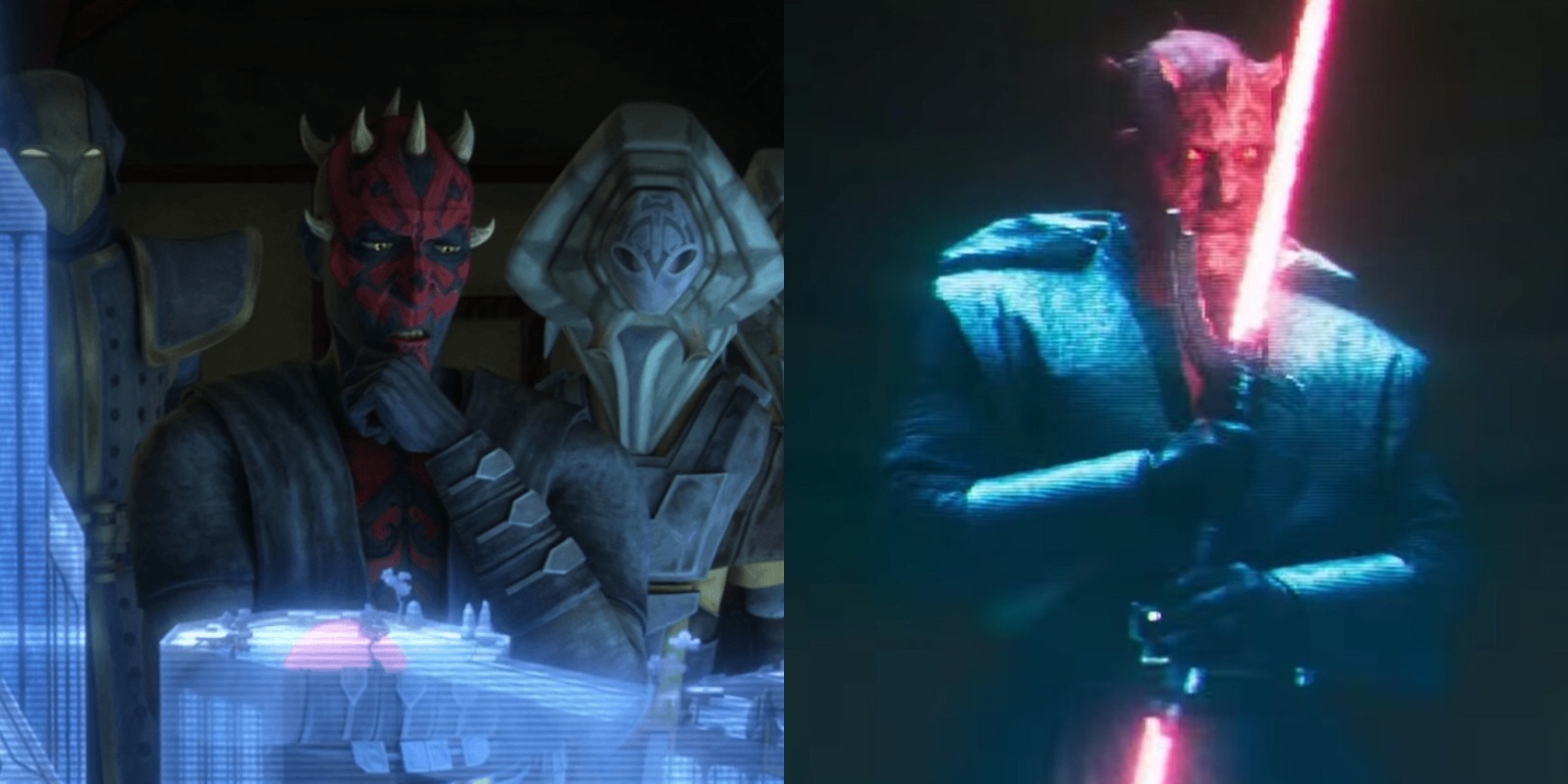 Over the course of the fourth and fifth seasons of Clone Wars, Darth Maul would accomplish feats no Sith has ever done before. He would unite the disparate criminal factions of the galaxy and form the Shadow Collective, the largest organized crime syndicate in galactic history. Long after the Clone Wars, Maul still remained a key player in the criminal underworld as seen in Solo: A Star Wars Story. From then on, he declared himself the new Dark Lord of the Sith, long before Palpatine’s Galactic Empire came into power. Oh, but it doesn’t stop there.
Over the course of the fourth and fifth seasons of Clone Wars, Darth Maul would accomplish feats no Sith has ever done before. He would unite the disparate criminal factions of the galaxy and form the Shadow Collective, the largest organized crime syndicate in galactic history. Long after the Clone Wars, Maul still remained a key player in the criminal underworld as seen in Solo: A Star Wars Story. From then on, he declared himself the new Dark Lord of the Sith, long before Palpatine’s Galactic Empire came into power. Oh, but it doesn’t stop there.
Remember the Mandalorians, the greatest warriors the Star Wars universe has ever known? In the fifth season of Clone Wars, Maul’s Shadow Collective joins forces with a group of Mandalorian exiles known as Death Watch in a bid to seize power from Mandalore’s new pacifist government. Death Watch manages to seize power from the pacifist regime and its leader Pre Vizsla betrays Maul, locking him and his brother away. That is until he breaks out of prison and challenges Pre Viszla to a duel for the right to claim the title of Mand’alor. Pre Vizsla accepts. After a lengthy duel, Maul prevails and decapitates Vizla (off-screen of course) before claiming ownership of the legendary Darksaber and the title of Mandalore’s new ruler.
 Barring Tarre Vizsla, Maul is the only Force-sensitive warrior to have been declared Mand’alor, not even Vader has that honour. After claiming the mantle, Maul would go on to capture Obi-Wan Kenobi. He then forces his old nemesis to watch as he ruthlessly murders Kenobi’s friend and lover, Duchess Satine Kryze. Thus breaking Kenobi’s spirit and completing his vengeance. It’s safe to say that Darth Maul is one of the most significant characters in the whole of Star Wars canon. Namely, two people can be credited for Maul’s triumphant return to the Star Wars universe. The first being Filoni himself and Sam Witwer, the voice actor behind Maul. Seriously, the level of intensity and vigour Witwer brings to Maul is insane. The two of them have managed to breathe so much life and personality into the character and the Star Wars community is all the richer for it.
Barring Tarre Vizsla, Maul is the only Force-sensitive warrior to have been declared Mand’alor, not even Vader has that honour. After claiming the mantle, Maul would go on to capture Obi-Wan Kenobi. He then forces his old nemesis to watch as he ruthlessly murders Kenobi’s friend and lover, Duchess Satine Kryze. Thus breaking Kenobi’s spirit and completing his vengeance. It’s safe to say that Darth Maul is one of the most significant characters in the whole of Star Wars canon. Namely, two people can be credited for Maul’s triumphant return to the Star Wars universe. The first being Filoni himself and Sam Witwer, the voice actor behind Maul. Seriously, the level of intensity and vigour Witwer brings to Maul is insane. The two of them have managed to breathe so much life and personality into the character and the Star Wars community is all the richer for it.
A Duel in the Desert
It wasn’t all sunshine and dead clone troopers for Maul though. By the end of the Clone Wars, the Republic under Sidious’ control finally defeated Maul’s forces and seized control of Mandalore. Furthermore, Palpatine had also wiped out Maul’s entire family, leaving the Sith an orphan. With his kingdom in ruins and his loved ones gone, Maul did what any other Force-user did at the time. He went into hiding, shortly after Palpatine issued the now infamous Order 66. He remained dormant for years until he emerged once more in that awful Star Wars: Rebels series. I won’t go into much detail as to why Rebels isn’t very good seeing that I’ve touched on that with a previous piece in the past. Long story short, the overall plot of the show felt relatively inconsequential to the overall Star Wars timeline and did very little to expand on the franchise’s lore. That being said, the series did an amazing job in wrapping up Maul’s story with a duel that felt as grand as it was intimate.
After decades have passed, Maul catches wind of an old Jedi hermit hiding out in the desert. It’s none other Obi-Wan Kenobi. After a few days of tracking the old man, the two finally confront each other. Once legendary warriors in the Age of the Republic, now forgotten relics in the time of the Empire. Two tired souls driven to carry on with one is stuck in the vengeful past while the other looks to a hopeful future. Kenobi initially refuses to fight his old rival until Darth Maul deduces Kenobi’s true intention of staying on Tatooine. He is protecting Luke Skywalker. Alas, these two world-wearied souls clash once more in the dusty night. A perfect metaphor for Star Wars’ transition from the high space fantasy of the prequels to the gritty space westerns of the original trilogy.
Like a spaghetti western duel, the fight is finished in mere seconds but so much meaning and subtext is packed into those moments. Maul draws his dual-bladed lightsaber, he poises himself for his classic attack using shock and awe. Kenobi then draws his blade and assumes one lightsaber stance before switching to another. After a few agonizing seconds, Maul attempts to strike down Kenobi using the same attack he employed against Qui-Gon Jinn. He fails and Kenobi through him. The duel is over. There’s so much rich symbolism here. Maul’s refusal to change ultimately lost out against Kenobi’s willingness to learn and evolve. As Maul lays there dying, Kenobi cradles his old enemy as the both of them discuss Luke’s destiny. At long last, Maul is at peace.
 To sum it all up, Maul’s evolution from two-dimensional assassin to vengeful spectre is the epitome of what makes Star Wars so great. That in this big, wide universe there are more stories to be told beyond that of the Skywalkers. Stories of tragedy, vengeance and power. Stories that excite our imaginations and make us wonder of what other adventures may be going on in a galaxy far, far away. Shows like The Mandalorian have shown that Disney is beginning to understand this concept.
To sum it all up, Maul’s evolution from two-dimensional assassin to vengeful spectre is the epitome of what makes Star Wars so great. That in this big, wide universe there are more stories to be told beyond that of the Skywalkers. Stories of tragedy, vengeance and power. Stories that excite our imaginations and make us wonder of what other adventures may be going on in a galaxy far, far away. Shows like The Mandalorian have shown that Disney is beginning to understand this concept.
Recently, there’s been some news about actor Sam Witwer possibly appearing in The Mandalorian. Witwer and producer and director of The Mandalorian Dave Filoni are really good friends, and he was slated to appear in the first season until a small debacle occurred. However, Witwer has also appeared in an interview teasing the second season of The Mandalorian, calling it “mind-blowing”. At the end of season 1 of The Mandalorian, it was revealed that Moff Gideon wielded the legendary Mandalorian weapon, the Darksaber. Could we be getting a possible flashback of the weapon’s history with Darth Maul appearing in them? Perhaps Darth Maul will finally get the love he deserves with a cameo in The Mandalorian? Only time will tell, friends.

